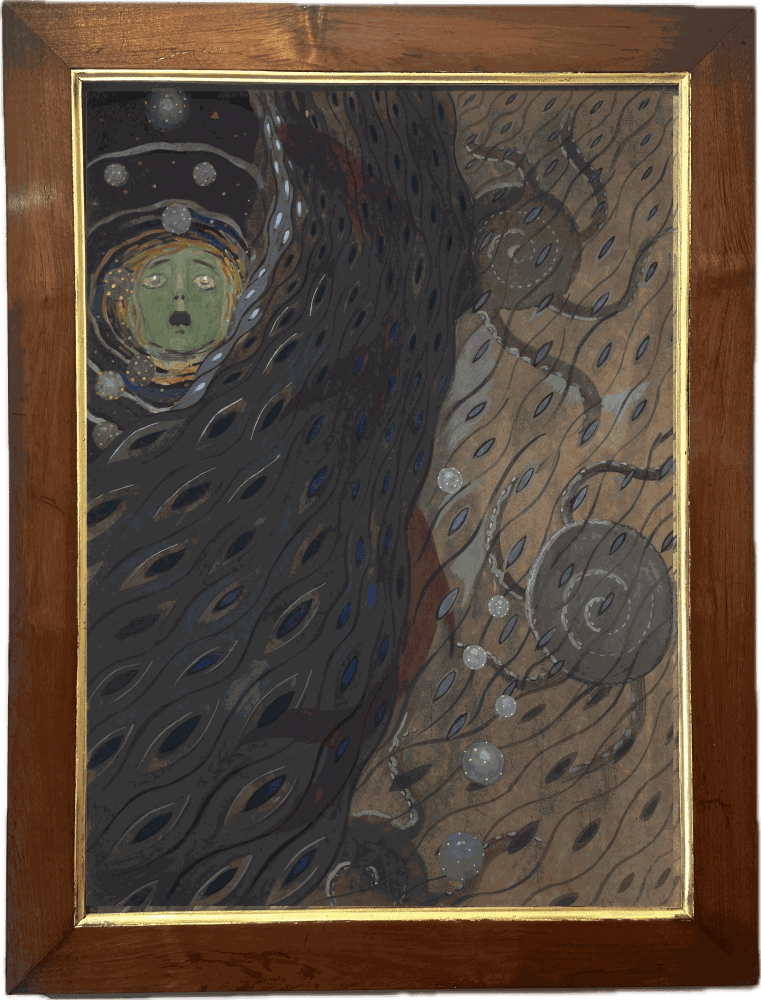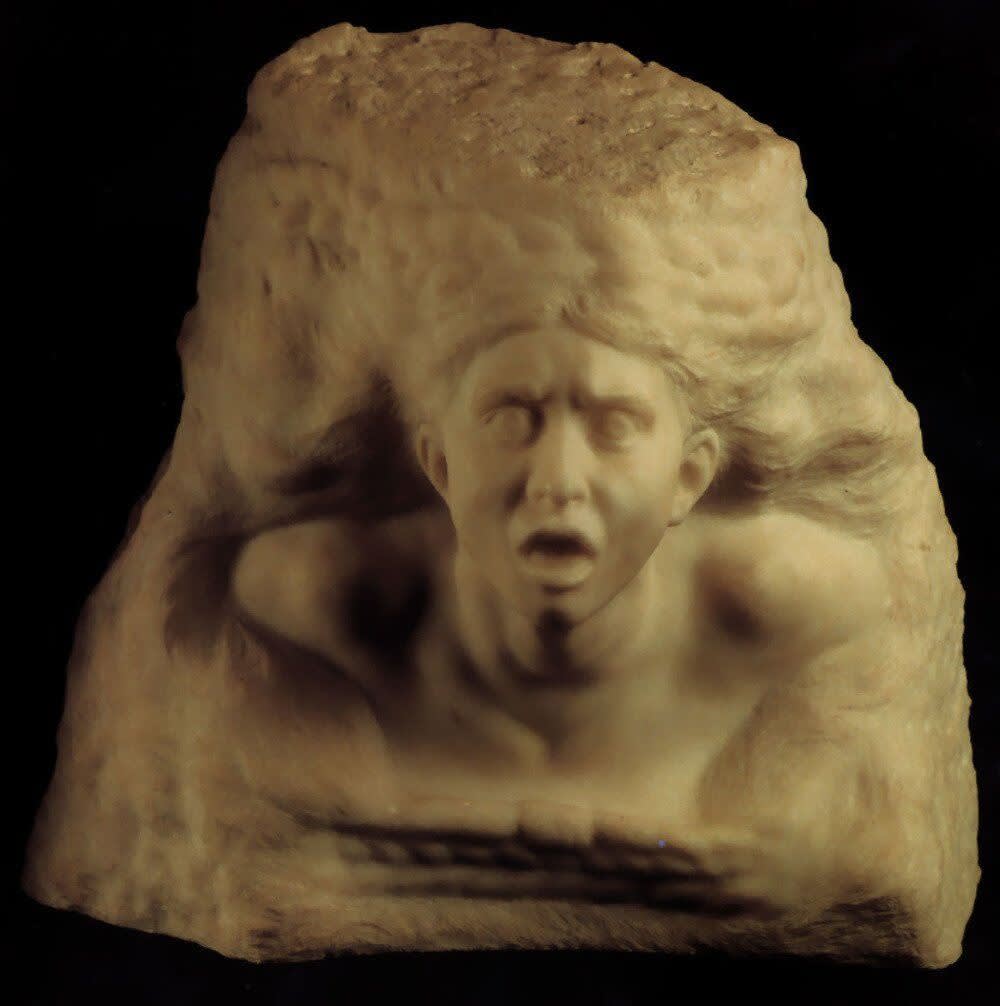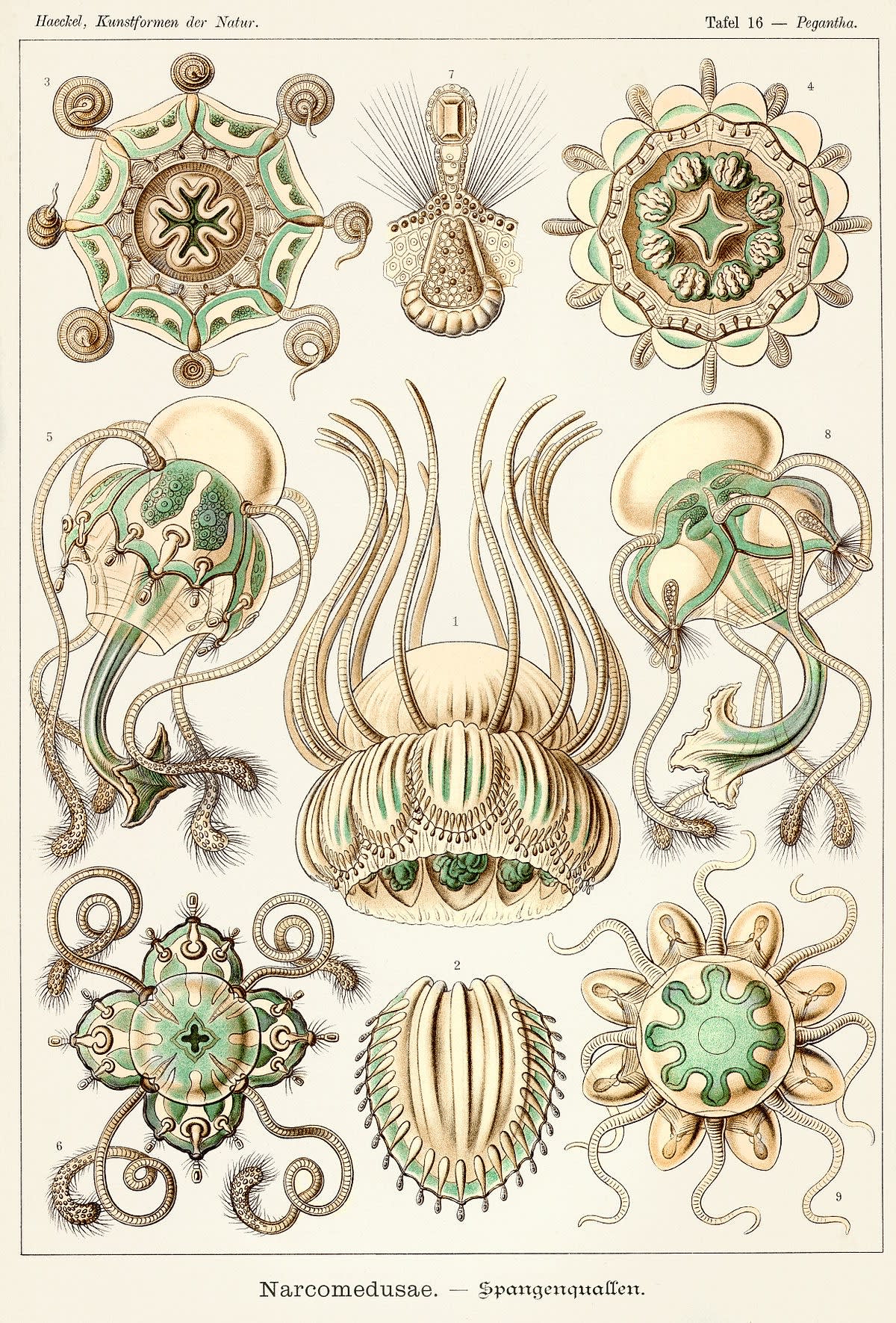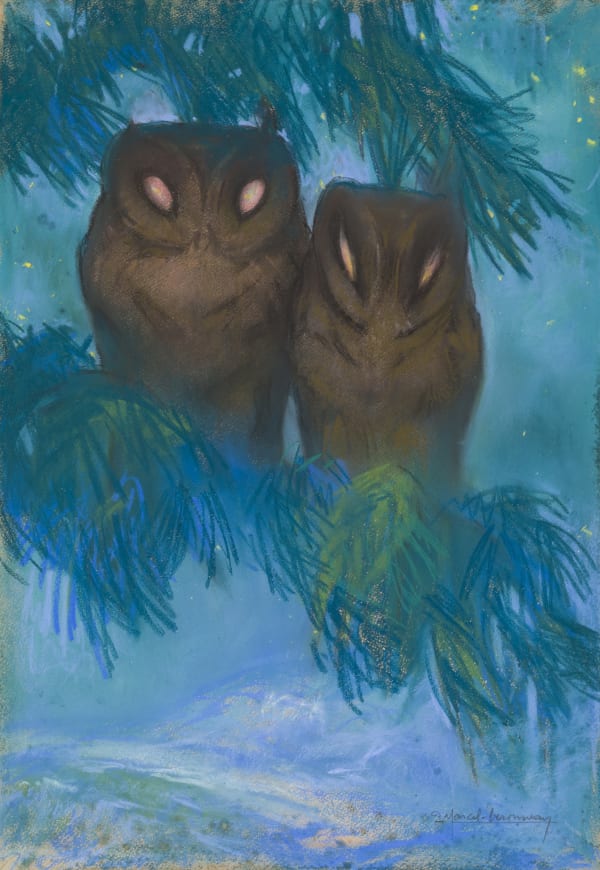

Pietro PERSICALLI
72 x 55 x 2 cm (with the frame)
Literature
Mario Finazzi (ed.), Piero Persicalli. Abissi e seduzioni, Rome 2022, no. 41; Il Déco in Italia, l’eleganza della modernità, exhibition catalogue Forte di Bard, Valla d’Aosta, 2 December 2022 - 10 April 2023, p. 24.
The dating of the work in question is based, in addition to the paper support prior to the date pencilled on the back, by the strong expressive power of the face which appears at the top left, possibly taken from the marble L'Orage by August Rodin (Fig. 1), which harks back to the Symbolist imagery of the early tens. Another citation which allows the work to be backdated is the jellyfish shape published in the volume by Ernst Haeckel, Die Natur als Kümstlerin, (Fig. 2) from 1913, very similar to the shape that Persicalli inserted here in the drawing. In this phase of the artist’s research, there is an evident intention to emphasize the more decorative aspect of his art, starting from Secessionist recollections, but in a less monumental way.

Fig. 1 - August Rodin, L’Orage, 1901, Marbel, Private collection

Fig. 2 - Ernst Haeckel, Die Natur als Kümstlerin,, Berlin, 1913
[1] Hugo von Habermann was among the founders of the Munich Secession. Heinrich Knirr participated in both the Munich and Viennese Secessions.
[2] Carlo Carrà, Pietro Persicalli, in Catalogo della VIIIa Esposizione Autunnale d’arte, the catalogue of an exhibition held at the Istituto G. Carducci, Como, 1924, op. cit., p. 39.
Join the mailing list
Subscribe to our newsletter to receive all the news about exhibitions, fairs and new acquisitions!


